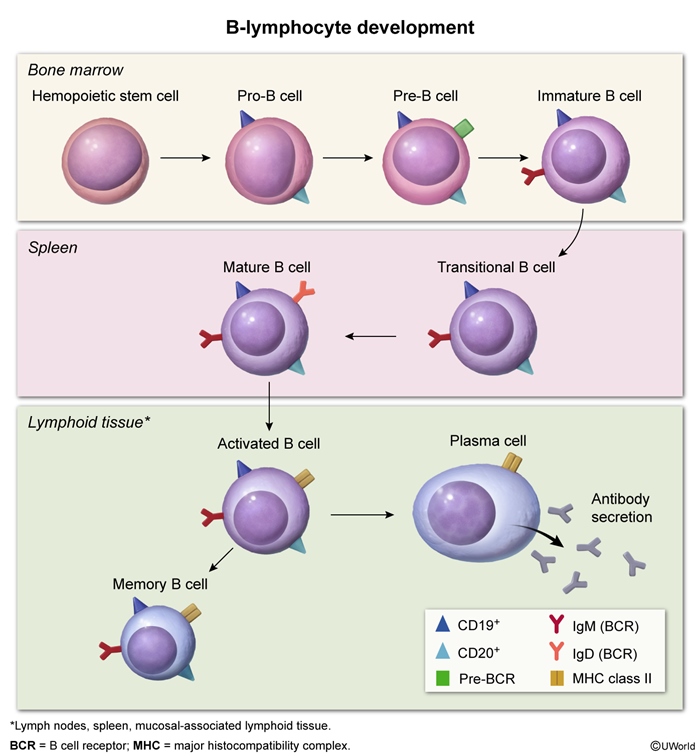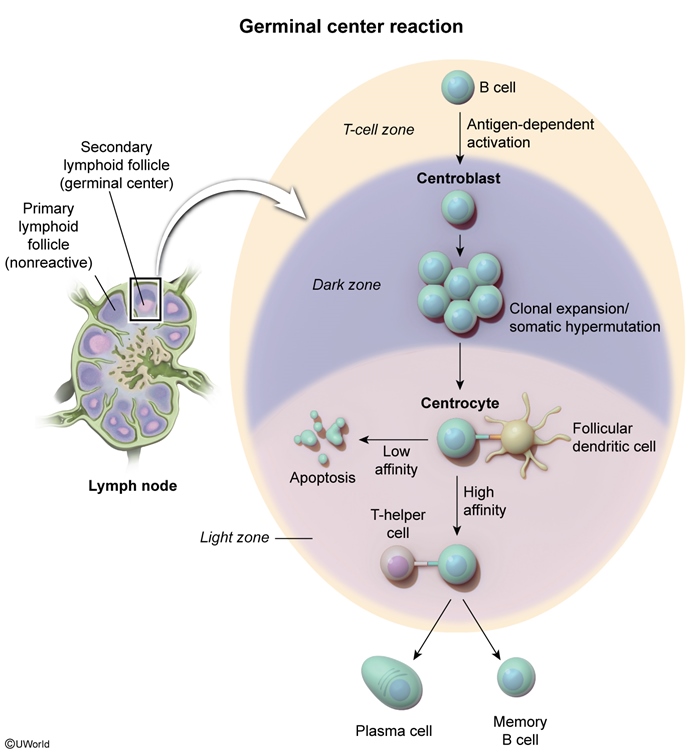Hyper-IgM Syndrome
Article Sections
Introduction
Hyper-IgM syndrome is a primary immunodeficiency syndrome characterized by impaired immunoglobulin class switching. Therefore, B cells continue to produce IgM, leading to decreased or absent serum IgG, IgA, or IgE. Patients have recurrent infections and failure to thrive.
Pathogenesis
B-cell development begins in the bone marrow, where hematopoietic stem cells differentiate into immature B cells that migrate to peripheral lymphoid tissue (eg, spleen, lymph nodes) for maturation (Figure 1). Mature B cells are capable of producing IgM and IgD. However, on exposure to antigens, mature B cells undergo a series of changes to become plasma cells, as follows:
- In the absence of T-helper cells, most mature B cells differentiate into short-lived plasma cells that produce antigen-specific IgM.
- In the presence of T-helper cells, most mature B cells differentiate into long-lived plasma cells that produce antigen-specific IgG, IgA, or IgE, as follows:
Continue Learning with UWorld
Get the full Hyper-IgM Syndrome article plus rich visuals, real-world cases, and in-depth insights from medical experts, all available through the UWorld Medical Library.
Figures


